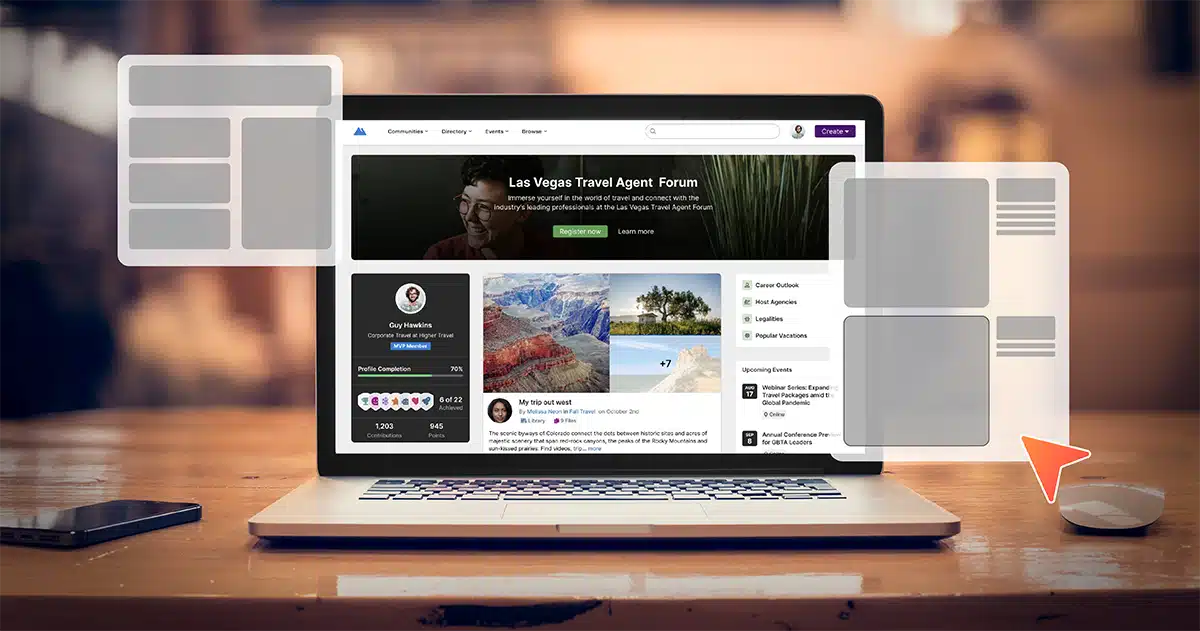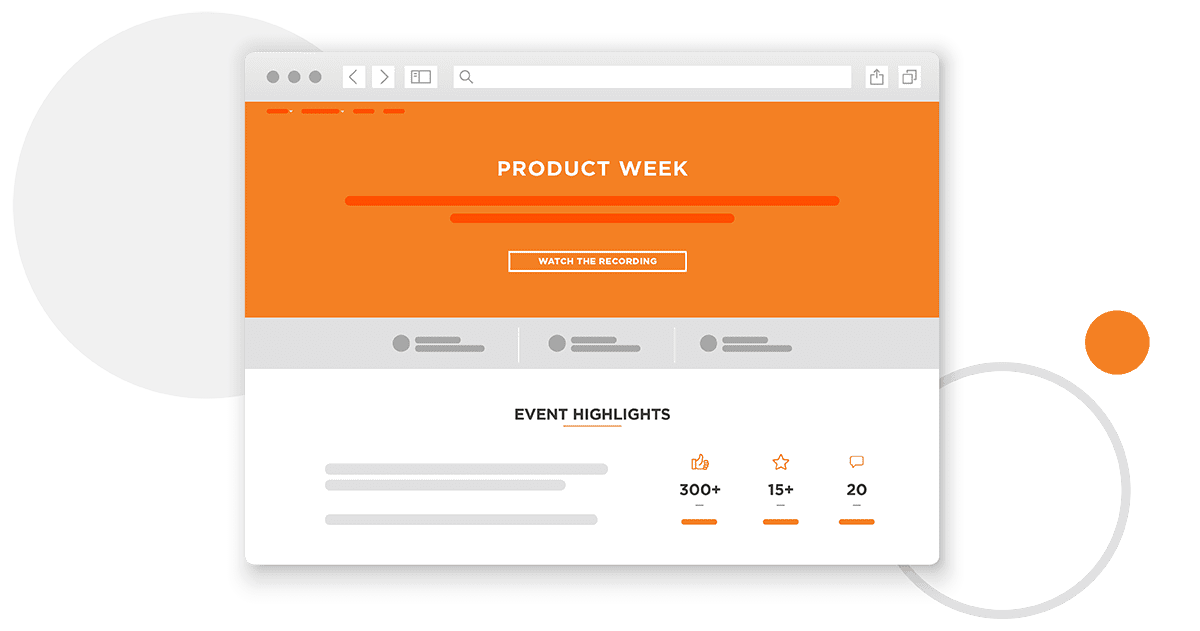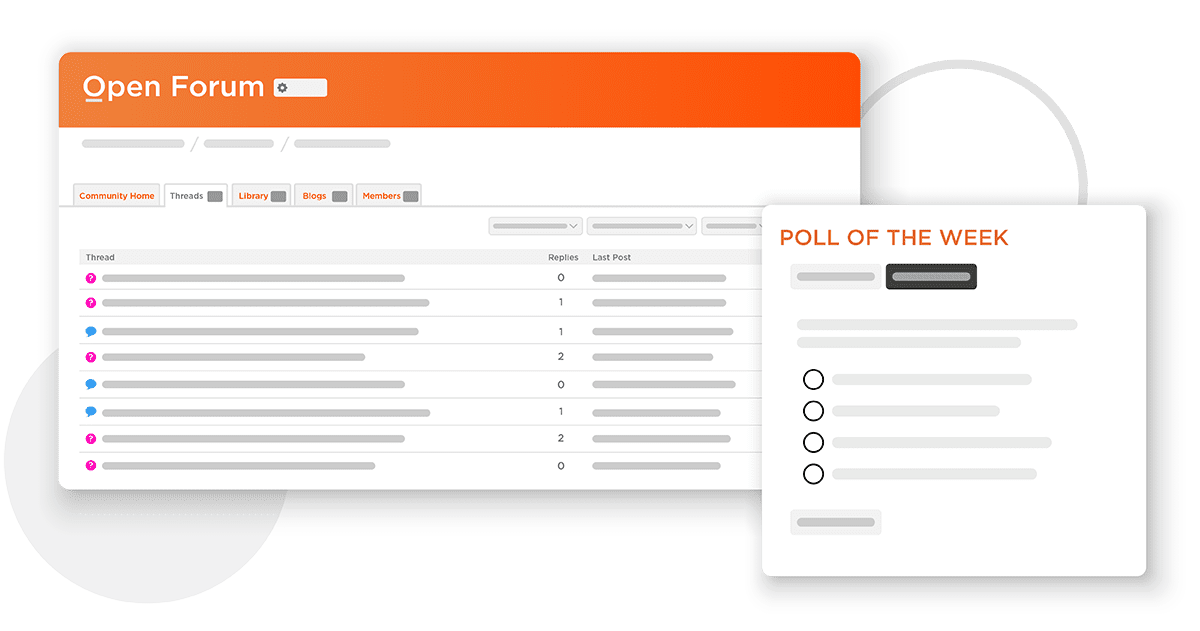
15 min read
Path to Renewal: Events
Tags: Member Engagement,Member Retention,Professional Associations,Trade Associations
Keep Members Coming Back
As we’ve explored in previous installments of the Path to Renewal, proving value and engaging your members is essential for member retention. Events are an important avenue for keeping members connected to your association and their peers and leading them up the member engagement ladder.
Keeping an eye on event attendance can also serve as an engagement marker as you evaluate where members stand on that ladder.
Depending on your association’s specific goals and audience, there are a variety strategies you can take keep members coming back to your events. Make sure you’re leveraging a multichannel approach to communicate value and opportunity.
Sharing Upcoming Events
It may seem like a no-brainer, but make sure your members know what you've got coming up. You can certainly send notifications every time you open registration for a new event, but you can also think about sending a regular calendar look ahead, highlighting multple events. Every event you host is an opportunity to make a connection. Even if someone doesn't register for every event, seeing all that you have to offer helps solidify your association as a thought-leader in the industry.
Attendee Messaging
Build excitement and orient registrants by planning an attendee email campaign. Share logistics, app instructions, tips for making the most of the event, and more. You don't have to send a ton of emails, but thinking through what you want attendees to know before they join you (whether in person or virtually) helps you foster a positive, immersive experience that reflects well on your association and makes attendees want to engage with you again. Separating instructions into several messages rather than one giant email helps prevent overwhelm.
Attendee Follow-Up
Don't let the engagement end with the conclusion of your event - plan a follow-up campaign for attendees. Your strategy might include a post-event attendee survey (learn what attendees liked and how to improve), a save-the-date for next year's event, a reminder about credits attendees might have earned (reiterating the value of their attendance), or suggestions for future programs to check out (guiding them to another point of engagement).
Similar Program Highlights
There's a reason you always hear about the value of personalization - marketing lands better when recipients feel like you know what they care about. Observing which events and programs your members engage with gives you valuable insight into their priorities - you can use these insights to drive them to engage with you again. When you have an event on a particular topic, think about pulling a list of attendees from past events on similar topics and sending them a personalized campaign.
Community
Think of your community as your event’s digital “home.” It helps you deepen the connection between your audience, your association, and other attendees before, during, and (crucially) after your virtual event. Use community tools to create ongoing networking opportunities, Q&A, discussion threads, and a resource library of event materials. Think about locking down particular community elements to just members to show added member value.

Website and/or LMS
Thinking about your event “hierarchy” and how you organize your educational programs takes your events from a random collection to a comprehensive curriculum. As you plan your events and programs, think about how they fit together and what subsets of your membership and wider audience you serve.
- Map out what you offer (in-person and virtual events, plus on-demand resources), as well as the career paths of your members. Do you have programs at each stage of your members’ journeys? Do you have programs relevant to the different types of members you’re hoping to attract and keep engaged? Do you offer a variety of formats (consider that some event formats require a lower investment and could draw new attendees who couldn’t have engaged otherwise)? Consider where you have gaps and where you might be overserving.
- Once you map out how your events and resources fit together, think about how to foster members along these pathways (and how to use your technological infrastructure to help you do that). Can you bundle a series of programs around a particular topic into a certificate program that members can purchase and complete to earn a certificate? Do you send outreach to members at different stages of their career, pointing them to the content that meets their experience level?
- Remember to leave space for hot/trending topics so you have the space to react if you see something members are asking for.
- How are your events and learning opportunities organized on your website? After someone completes one program, is it clear what they should do next or what other programs might interest them?
- Think about incorporating a Learning Management System (LMS) – and integrating it with your community – as a way to organize your events and educational programs, allow members to self-track their progress, and incentivize participation. For example, with an integrated LMS and community, you can use gamification tactics and award badges and ribbons to celebrate members’ learning accomplishments (and apply social pressure to encourage members to dip their toes into virtual learning).
Measuring Success
Some events take so much effort that it can be tempting, when they’re complete, to just celebrate a job well done and move on. You should absolutely give credit where credit is due, but measuring the impact of your events is an important part of your event strategy because it can help you see if your effort is well spent and identify ways to keep improving. If your events aren’t driving your intended results, it might be time to make some adjustments or retire them in favor of trying something new.
Additionally, your event metrics can give you an idea of which members are engaged, making them a valuable tool for evaluating member engagement.
Some metrics that can tell you more about your event’s performance and member engagement include:
| Registration and attendance: Did you meet your registration goals – and did the majority of registrants show up? If revenue was a goal, did your event revenue exceed event costs? If you’re able, examine which channels and messaging drove the most event attendance so you can build on those strategies for your next event. | |
| Evaluations and satisfaction: Did you send out event evaluations? How did attendees rate the event? What were their favorite parts and what would they like to see improved? If you categorize your events by learning level, think about asking if attendees agree with how advanced you labeled the event. Remember to consider the feedback you receive in the context of the total number of attendees – sure, 20 complaints might feel like a lot when you’re reading them, but if that’s out of 2,000 attendees that’s only 10%. | |
| Attendee composition: An interesting metric to look into that goes a little deeper than quantity and satisfaction is looking at who shows up to your events – and this could include any details your tech stack enables you to measure.
If the event was open to both members and nonmembers, were there more of one or the other? How many first-time attendees were there? Which audience personas were represented and did that align with who you thought would show up to that particular event (ex: early career vs. advanced; local vs. those who travelled; specific job roles or organizations; etc.)? You can also look into how many of your members repeatedly engage with events, and who those repeat attendees are. These stats can help you better understand who you’re reaching and who’s engaging so you can explore why. For example, many associations saw that when they hosted virtual events during the pandemic, they saw a lot of new-to-them attendees. These new attendees were often earlier career or from lower-resourced organizations, which supports the inference that virtual events are easier/cheaper to attend and thus draw an additional chunk of your association’s audience who might not be able to get approval/funding to attend in-person events, or who can’t take the time away from work or home. Insights like this can inform your future strategies. |
Ignite Enthusiasm and Foster Connection
Events are a great way to break up the monotony of the day-to-day schedule and bring people together. You can use them to both draw in new members and engage existing members. Your members are often your biggest advocates and often end up selling membership for you when given the opportunity to connect with their peers (there’s a reason referrals are often a huge part of associations’ member acquisition). Make sure you’re leveraging your events to meet the different needs of your different members, and that you’re actively building on event momentum. When you plan ahead for how you intend to facilitate connections before, during, and after your events, you ensure that all your hard work doesn’t fizzle out when that hour-long webinar ends – instead, events become the spark from which you keep building connections and moving members up the engagement ladder.

The Guide to Member Retention
24% of associations don’t have a tactical plan to increase engagement, and 29% think members forget to renew. Check out the rest of our Path to Renewal series to learn how you can drive engagement and retention with strong member onboarding, email tactics, community, and more.





